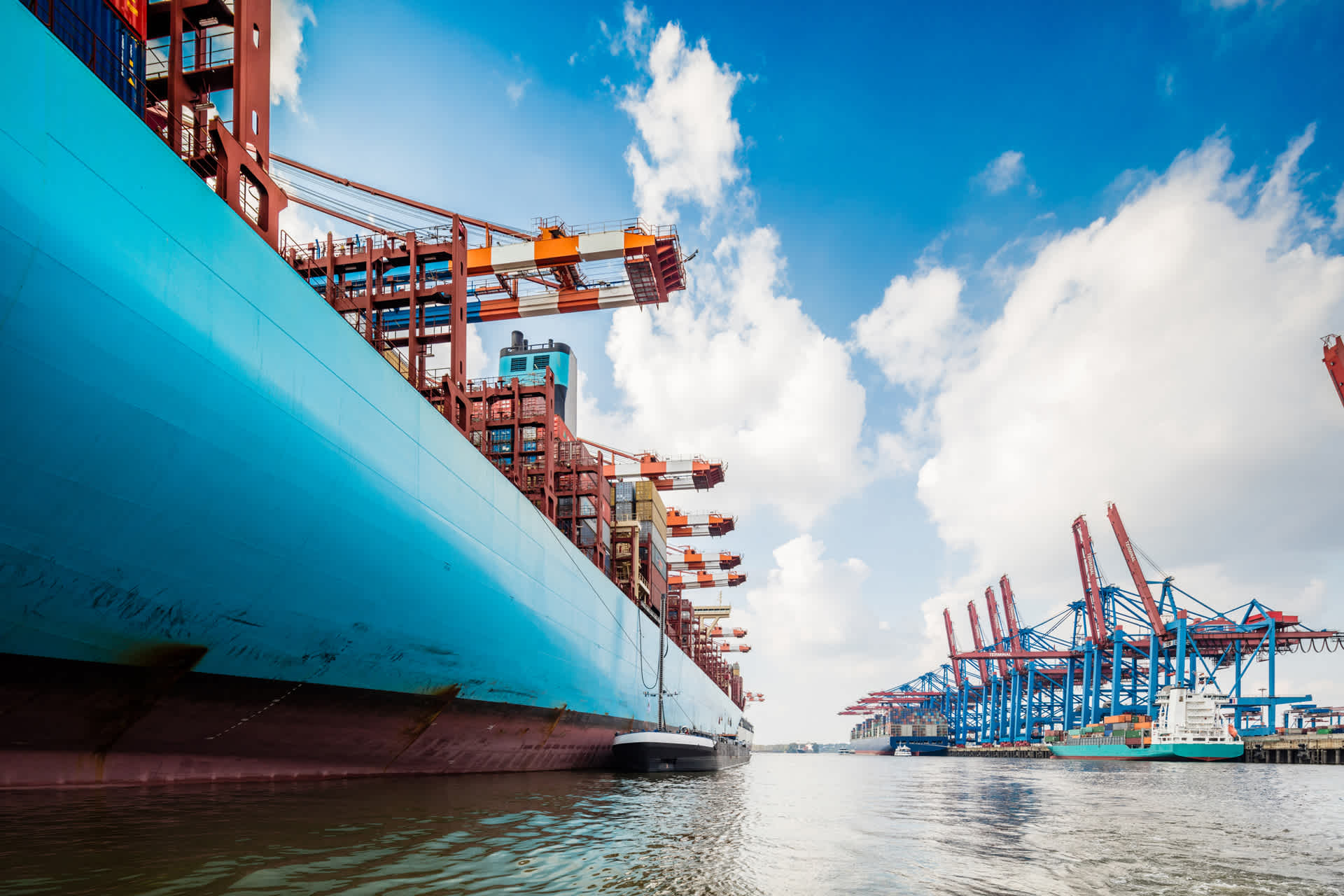Global Logistics Update
Freight Market Update: September 6, 2022
Ocean and air freight rates and trends; customs and trade industry news plus Covid-19 impacts for the week of September 6, 2022.
Freight Market Update: September 6, 2022
North America Freight Market Update Live | Thurs, September 8 @ 8:30 am PT / 11:30 am ET
European Freight Market Update Live | Tues, September 20 @ 16:00 CEST / 15:00 BST
Ocean Freight Market Update
Asia → North America (TPEB)
- TPEB Demand and rates continue to drop: The expected demand and TPEB volume from shippers to get ahead of Golden Week is in question this year as the Freight All Kinds (FAK) market continues to soften and mitigations are frequent. Blank sailings continue to spot the market for September as the carriers look to reduce the total number of anchored vessels at the ports, especially U.S. East Coast (USEC)—currently 40 at Savannah—and U.S. Gulf Coast (USGC)—currently 21 at Houston.
- Rates: Rates remain soft in many major pockets.
- Space: Open, except in a few pockets.
- Capacity/Equipment: Open, except in a few pockets.
- Recommendation: Book at least 2 weeks prior to cargo ready date (CRD).
Asia → Europe (FEWB)
- There is no peak season and demand has been slowing down. Supply is still relatively tight due to the large amount of blank sailings, vessel sliding, and port omissions. The port congestion in Europe, particularly Hamburg and Rotterdam, has reached critical levels causing further delays and late return of vessels to Asia. There are indications of power cuts in Ningbo (Zhejiang province) which would affect production output but there is still no official information available.
- Rates: There is continued rate pressure on spot rates due to lower demand.
- Capacity/Equipment: Space is available but it is impacted by additional blank sailings and delays due to the port congestion in Europe.
- Recommendation: Allow flexibility when planning your shipments due to anticipated congestion and delays.
Europe → North America (TAWB)
- Only 8 vessels waiting outside Los Angeles/Long Beach which is the lowest number since October 2020. Also yard congestion is improving. Different story for USEC where congestion is still hitting hard.
- Rates: No revisions downwards have been announced by carriers at the moment. Levels remain stable at high levels with expectation for this to remain through the end of Q4 2022.
- Space: Still very tight on the USEC with some space open for direct routing to the U.S. West Coast (USWC).
- Capacity/Equipment: Equipment availability remains the biggest challenge for all EU origins, particularly in the Mediterranean region. Low empty stacks at inland depots, prioritize pick up from the Port of Loading.
- Recommendation: Book 4 or more weeks prior to CRD. Request premium service for higher reliability and no-roll.
Indian Subcontinent → North America
- Rates decreasing across most port pairings as capacity continues to outweigh demand.
- Rates: Rate changes occurring with more velocity across the market. USWC being the most affected where rates are coming closer to Transpacific Eastbound (TPEB) levels. USEC rates are declining, but at a much slower pace.
- Capacity/Space: Space is available across most lanes at standard (non-premium) rates. Decreases in port congestion around the world is effectively increasing capacity as ships are experiencing less delays covering shorter periods of time.
- Equipment: Smaller ports and inland container depots (ICD) will continue to have sporadic deficits based on import/export cargo mix.
- Recommendation: Take advantage of declining rates.
North America → Asia
- USEC ports continue to see challenges with vessel congestion and some vessel strings still omitting Charleston and Savannah entirely. Erratic vessel schedules continue to cause significant challenges with changes in posted earliest return dates and vessel cut-offs at the port. For USWC, arrivals and available capacity for LA is generally open whereas Oakland and Seattle are more fluid.
- Rates: No GRI’s announced for September.
- Capacity/Equipment: Deficits on containers and chassis continue to plague Inland Port Intermodal (IPI) origins. Chicago has been the most reliable. Availability for standard equipment has not been an issue for most ports. Capacity from the US Southeast to India remains constrained due to continuing port omissions for Charleston and Savannah. Overall capacity for Indian ports requiring a transshipment service remains very tight from both the USEC and USWC.
- Recommendation: Please place bookings 4 weeks prior to vessel Estimated Time of Departure (ETD).
North America → Europe
- Congestion issues persist in Europe but are reported to be improving. Hamburg is experiencing the most significant congestion at present. USWC service to Europe remains extremely tight due to void sailings and skipped ports caused by systematic delays. USWC coverage for Mediterranean ports now has reduced capacity due to one string being phased out.
- All carriers continue their booking stop for shipments to Ukraine, Russia, and Belarus.
- Rates: No further GRI announcements for September or October.
- Capacity/Equipment: USEC service to Northern Europe has capacity available however Savannah has irregular challenges due to it being omitted on certain vessel strings. Vessel capacity from the port of Houston has been very tight due to a significant increase in demand and delayed vessels.
- Deficits are still plaguing many IPI origins. Availability for standard equipment at ports has not been an issue, but special equipment is hard to come by.
- Recommendation: Please place bookings 3 to 4 weeks in advance for East Coast/Gulf sailings and 6 weeks for Pacific.
North America Vessel Dwell Times

Air Freight Market Update
Asia
- N. China: The market is weak due to low demand. TPEB rates to the west coast have dropped while east coast and Far East Westbound (FEWB) rates maintain at similar levels to last week. The Chengdu (CTU) airport lockdown has been extended until Sept. 7, manufacturers are working under close-loop management and production has almost recovered. A special permit is required for trucking services which has impacted shipment pick-ups and road transportation.
- S. China: The market remains soft and rate levels similar to last week, but demand is expected to increase later this month. The SZX-HKG cross border situation continues to improve, however please expect 1-2 days additional transit time.
- Taiwan: The market is slack with rates decreasing slightly from the prior week. Fuel surcharges are xpected to decrease in the second half of the month.
- Korea: The market ex-Korea continues to be slack with no signs of picking up before the Korean Thanksgiving holiday. Korean Air and Asiana Airlines have recently decreased fuel surcharges for both TPEB and FEWB trade lanes.
- SE Asia: Demand ex-Malaysia continues to be soft with rates maintaining at similar levels. Ex-Thailand, TPEB capacity to the east coast is a bit tight while TPEB capacity to the west coast and FEWB lanes remain open. TPEB demand ex-HAN is picking up after the public holiday, while FEWB demand remains stable. Ex-SGN demand is still stable but is expected to pick up in the second half of the month.
Europe
- Transatlantic Westbound (TAWB) capacity has surpassed pre covid levels. Demand remains consistent and it is expected to pick up towards the end of September.
- FEWB demand into Europe affected by newly introduced lockdowns in the Chengdu Region and restrictions in Shenzhen. Further capacity constraints expected as the covid measures ease and the start of the peak season.
- Jet fuel prices are slightly decreasing, although still high.
- Congestion at Dover is causing trucking delays and longer lead times from LHR.
- Terminal handling operations are more stable across major European hubs.
- Now is the right time to start planning for the upcoming peak season in order to secure more favorable rates and uplift possibilities.
Americas
- A heavy travel season in and out of Canada is putting a strain on the infrastructure of major airports (Vancouver and Toronto in particular) which is having a trickle-down effect on cargo operations. This is resulting in longer than normal dwell times for both import and export cargo.
- Air Canada has announced they are gearing up to add additional flights out of all major gateways. These flights are likely to include both passenger and freighter options.
- Export demand remains steady from all markets.
- US airports are running at a normal pace.
- Capacity is opening up further, especially into Europe, where most carriers have increased the number of passenger flights for their summer schedules.
- Shipments into Europe could experience additional destination dwell time due to the labor shortages in some western European hubs.
- Rates remain stable week over week.
Trucking & Intermodal
Americas
US Import/Export Trucking: Market Trends
- Canadian congestion continues with yard utilization >90% across the board, along with continued rail congestion. Efforts to mitigate congestion in Toronto and Montreal include CN opening additional relief container yards which could potentially impact drayage rates.
- Chassis shortages persist, notably in Chicago, NYNJ, Memphis (95% utilization, 10+ day street dwell time) and in LA (9.8 day street dwell for 40’, which is down ~1 day from August).
- East coast and gulf congestion continues with vessels at anchor in New York and Norfolk. Savannah congestion has increased to 42 ships (up from 36) awaiting berths at the end of August, with wait times in the 9-18 day range. Import container dwell time averages over 10 days.
US Domestic Trucking: Market Trends
- Tender rejections by carriers have decreased by 70% YoY from 20.8% to 6%, meaning carriers are accepting more loads due to having more capacity.
- Spot rates crept up in August by $0.02/mi after bottoming out at a 16-month low (down ~35% YTD). Contract rates followed after edging up for several months due to fuel surcharge (FSC) schedules.
- Load-to-Truck ratios have leveled out going into Q3 but are still down ~33% YoY. This is the key barometer for supply/demand in the marketplace.
Customs and Compliance News
USTR Announces Continuation of Section 301 Tariffs
The Office of the U.S. Trade Representative officially confirmed on September 2 that representatives of domestic industries requested the continuation of the Section 301 tariffs during the first phase of the tariffs’ statutory four-year review. USTR’s formal notice of the continuation may be found here. Details on the next steps in the four-year review process will be set out in subsequent notices.
Factory Output news
- Mainland China: China's rail-sea intermodal trains services have developed rapidly over the past five years. Source
- Taiwan: The semiconductor industry in Taiwan is expected to face challenges in 2025 as global competition intensifies. Source
- Vietnam: Trade surplus hits nearly $4 billion in 8 months. Source
- Thailand: Will the Laos-China rail network increase opportunities for Thais? Source
- Singapore: Tuas Port officially opens. Source
- Bangladesh: The Bangladesh government has permitted 49 business organizations to export a total of 2,450 Tons of Hilasa to India during the Durga Puja season. Source
Freight Market News
Super Typhoon Impacts Supply Chain in Asia
According to Port Technology, a recent typhoon “Storm Hinnamnor” has reached Chinese and Japanese coasts over the weekend, prompting China to close ports in Yangshan and Ningbo. South Korea’s Busan port has also halted operations in anticipation of the typhoon’s landfall.
Port Congestion Shifts from West Coast Eastwards
According to The Loadstar, US ports are seeing the congestion shift from the west coast to the east coast, as shippers anticipated delays from the ongoing labor conflict. Savannah has the most vessels waiting at port, while New York and New Jersey are struggling to clear their ports as they experience the shortage in chassis.
Flexport Research Updates
Weekly Economic Report: South Korea’s Canary Sings
South Korea is the first country to report August trade data, providing a “canary in the coal mine” for global activity. Total export growth is slowing and its shipments of semiconductors have started to fall. Neither bode well for global trade activity or the economy at large.
A quick reminder: the weekly economic report is now its own newsletter! You can sign up here to have these insights delivered directly to your inbox each week.
Air Timeliness Indicator: TPEB ↓ @ 10.6 days, FEWB ~ @ 9 days.
Ocean Timeliness Indicator: TPEB ↓ @ 86 days, FEWB ↑ @ 96 days.
- US: Industrial importers still expect growth, but at a slower rate than before. Ocean shipping rates fell for an eleventh week, while the time taken for the first stage of Asia-North America shipping fell to the lowest since December 2020.
- EU: Retail sales fell modestly but remained above their 2019 level. Ocean shipping rates are down to July 2021 levels and the timeliness of the first stage of ocean shipping improved to the best since December 2020.
Freight Market Update is a complimentary service from Flexport, the modern freight forwarder. If you're not already a subscriber, we invite you to subscribe here.
Please note that the information in our publications is compiled from a variety of sources based on the information we have to date. This information is provided to our community for informational purposes only, and we do not accept any liability or responsibility for reliance on the information contained herein.


